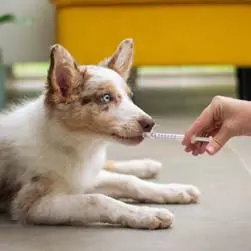Posted on: 25/11/2022
Category: Pet
When you have a pet, they are truly a part of the family. When a pet falls ill, you will naturally want to ensure they can get the best care possible. However, it is no secret that vet visits can be expensive. Pet insurance is a worthwhile investment to ensure you can give your pet the treatment they need at times they fall under the weather.
The pet insurance market is a big one, and we appreciate the process of taking out a policy can feel overwhelming with all the information available out there. In this article, we will lay out some of the key actions you can take to ensure you can purchase the best pet insurance policy possible for your furry family member.
1. Assess the needs of the pet you are insuring
Pet insurance needs are not one size fits all, as every pet is different. By understanding the individual requirements for your pet, you can look out for policies that would fit their needs best. For example, are they accident prone? Do they mix with other pets often, making it easier for them to pick up a contagious illness?
There is also some key information it is helpful to have on hand about your pet, as it can impact how easily insurable your pet will be:
- Your pet’s breed – Some breeds can be difficult to insure, this can be down to common genetic conditions in the case of pedigree breeds. In the case of larger breeds, if they are particularly expensive to treat at a vet this may affect how easy they are to insure.
- Your pet’s age – Pet insurance can be difficult to acquire for older breeds, with some providers having an upper age limit. (Commonly 8 y/o for cats, 10 y/o for dogs)
- Whether your pet has any pre-existing conditions – Any pre-existing conditions that were diagnosed before the commencement of a pet insurance policy, will not be covered.
2. Understand the types of pet insurance available and what is covered
- Lifetime cover - Covers treatment fees for illness and injury for a pet’s lifespan, for as long as the policy is renewed each year.
- Max-benefit cover - Covers treatment fee for illness and injury, with agreed fixed sums for each condition available only once.
- Time limited cover - Agreed fixed sums for illness and injury, with treatment being covered for 12 months.
- Accident-only cover - Only covers treatment for accidental injury up to an agreed fixed amount.
What pet insurance covers:
Pet insurance providers will cover the cost of treatment for illness and injury as standard, depending on the type of policy chosen. This includes diagnostic tests, physiotherapy, and prescriptions.
More comprehensive policies (e.g., lifetime cover) may also offer cover for boarding fees if you are hospitalised and must seek pet care.
Always read policies carefully to determine the specific cover you will be receiving, as this can differ between providers.
3. Be aware of your budget
For a pet insurance policy to remain in force, you must pay the agreed insurance premium amount (commonly a monthly payment). It is advisable to be aware of the rough amount you can afford to pay towards a pet insurance policy, so you can ensure you can comfortably keep on top of payments. This will help you and your furry friend stay covered with a live policy.
When a claim is made on pet insurance, most insurance providers will require you to pay a pre-agreed excess amount towards the claim. Some providers will allow you to customise this amount, as long as it fulfils a required minimum. This means you can adjust the amount to suit your personal budget, or you can make the excess payment higher to bring down the price of your monthly premium.
4. Compare providers
With the amount of insurance providers on the market, it is important to shop around so you can find a pet insurance deal that suits you best. Some providers also offer free gifts such as gift vouchers, or introductory discounts. Here at Find My Cover, you can view some of the best insurance providers on the market, see any available discounts and compare pet insurance offers. Get started today by clicking here!








